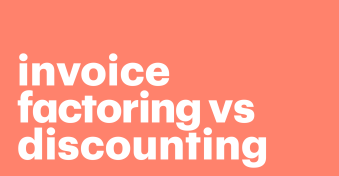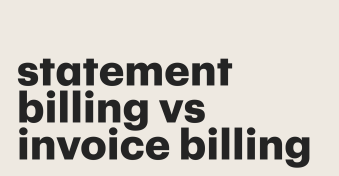Not many people enjoy dealing with reams of internal paperwork.
But streamlining your accounts is a necessary evil—one which you can achieve with ease when you use the right document for the right transaction.
At PandaDoc, we like to bring simplicity to complex terms. Today’s explanation? Requisition Vs. invoice.
These are both documents used in different stages of a business transaction.
But how and when? Let’s dive in.
What is a requisition?
A requisition is a formal request that an employee or department makes to purchase goods or services from an external supplier.
Typically including details such as the description of the items requested, the quantity needed, and any relevant specifications, a requisition purchase order must be approved by a manager before consent is granted.
When are requisitions required?
Purchase order requisitions are often required in large businesses with formal procurement processes. As such, a requisition provides authorization, together with
an accurate record of external purchases.
The function of requisitions is for businesses to control spending and ensure that purchases align with operational objectives and the overall budget.
Some organizations dictate that a requisition is required when a purchase exceeds a certain threshold. Before that threshold, companies tend to buy products directly with the company credit card.
Information to include in a requisition order form
The information you need to include in an order requisition form includes:
- Name of the requesting department
- Purchaser’s location and mailing address
- Exact amount of products
- Description of products
- Legal name of the outside supplier
- Expected price of purchase
- Requested delivery date.
The more information the accounting department has, the easier it is to approve the purchases.
What is an invoice?
An invoice is a document that is issued by a seller to a buyer, and requests payment for goods or services that have already been provided.
An invoice generally includes information such as the name and address of the seller and buyer, a description of the goods or services provided, the price, any applicable taxes or discounts, and payment options—such as electronic payments or bank transfer details.
How to create an invoice
You can easily create an invoice for your business with PandaDoc’s invoice templates.
To do this, follow these steps:
1. Upload your invoice template
You can either upload your own invoice template via the user dashboard or select a PandaDoc invoice template.
Click on the green Create button in the upper right-hand corner of your browser window.
Note: You can also choose to create your new invoice template directly within PandaDoc from a blank document—this method gives you the freedom to edit every element of your invoice.
2. Populate the text parameters with the relevant information
The PandaDoc invoice template displays some yellow-highlighted text parameters for you to simply complete—this information will then be standardized throughout the document.
3. Add elements to your invoice
Within the template, you’ll find tools for inserting images and dropdown menus to make it more functional.
One example is giving your clients the ability to select their payment method (e.g., credit card, PayPal, or bank account) from a dropdown menu.
Remember, the easier your invoice is to interact with, the higher the chances you’ll be paid in good time!
4. Fill in or assign any signature fields on your invoice
PandaDoc provides the ability for your clients to immediately sign electronic invoices with a digital signature.
Figuring out how to sign an invoice is simple—create a place for a digital signature by dragging the Signature block into the appropriate place on your invoice.
Next, click on the field and add your own signature if necessary, or send it to your client by hitting the Complete button and following the on-screen prompts.
5. Complete your invoice
Run through your invoice to check its accuracy and that all the fields work correctly.
Effective invoices should include:
- Your contact details
- Product details
- Payment terms and the due date
- Discounts and taxes information.
When you’re ready, click the green Complete button on the right side of your browser window.
When should an invoice be sent?
Regardless of whether you use sales invoice software or do things by hand, an invoice should typically be sent after the delivery of the goods or on completion of the services.
This is not always the case—if you’ve come to a different arrangement with your clients, be sure to specify this on your invoices.
All relevant information, especially payment terms, help to avoid disputes or confusion regarding the invoice matter.
Key differences between a requisition and an invoice
Here’s some key differences between a requisition and an invoice:
| Requisition | Invoice |
|---|---|
| A formal request for the purchase of goods or services | A request for payment for goods or services already provided |
| Submitted by an individual or department | Typically issued by a seller to a buyer |
| Used to control spending and ensure purchases are authorized | Used to keep track of payments owed and receive and maintain cash flow and accurate records |
| Often required to be submitted and approved before purchases can be made | Typically sent after the delivery of goods or completion of services |
| Helps to streamline the procurement process by providing a clear understanding of items needed and due dates | Helps to ensure timely payment and to avoid disputes or confusion regarding the payment amount or terms |
| Can be used to maintain accurate records of purchasing activity | Can be used to maintain accurate financial records and to track payments owed and received |
Why do companies need requisitions and invoices?
Companies need requisitions and invoices for different reasons, as they serve different purposes in the procurement and payment processes.
Requisitions are necessary to ensure that purchases are properly authorized and controlled, and invoices are essential to keep track of payments owed and received for goods or services provided.
Create the perfect requisitions and invoices
For all of your business’s document requirements, turn to PandaDoc.
Whether it’s contract vs. purchase order or requisition Vs. invoice, PandaDoc has you covered.
You get proven templates for invoicing clients, including a simple pricing table, payment terms, signature fields, and embedded payment options.
The invoice template can be used for free whenever you need to create and send an invoice.
Many companies use PandaDoc for all of their business document needs—because PandaDoc gets any document you need, signed faster.
Disclaimer
PandaDoc is not a law firm, or a substitute for an attorney or law firm. This page is not intended to and does not provide legal advice. Should you have legal questions on the validity of e-signatures or digital signatures and the enforceability thereof, please consult with an attorney or law firm. Use of PandaDocs services are governed by our Terms of Use and Privacy Policy.

